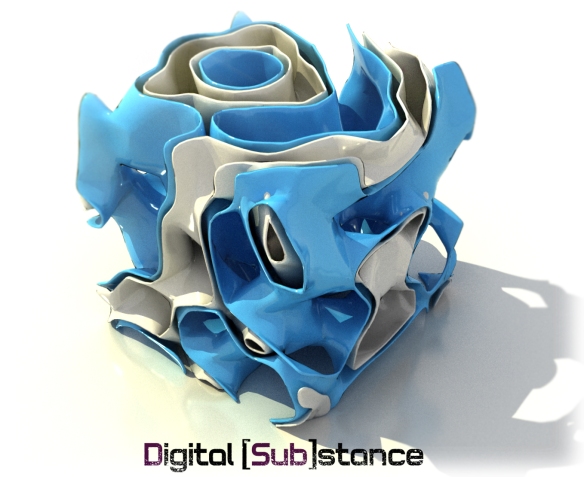I know I haven’t properly updated the Nudibranch examples on the GH forum, however since I have been getting a lot of requests to display what and how exactly this isosurface snapshot from the previous post about the release of Nudibranch works, i decided to spent a few hours to document this process and also share the definition. Take a look at the following video.
This definition uses two Nudibranch components the Satellites and the AttractorValues, combined with the Millipede’s isosurface component. Three or more satellite entities create a 3d non-uniformal field of values from 0.00 to 0.5 these values are fed to the isosurface component and Voila!!. No hustle animated complexity defined by certain rules ( number of attractors, equation for the values distribution <cos,sinc ect>.
You can download the definition as usual from the [Sub]code page.
And of course you must have Nudibranch and Millipede installed..
Enjoy.! 🙂
![Digital [Sub]stance](https://digitalsubstance.wordpress.com/wp-content/uploads/2016/05/cropped-cover_160514_title-012.jpg)


Wow! Thanks for sharing the definition, it seems to be awesome! I cannot wait to give it a try! Can the process be freezed and export the model as an .stl file for 3D printing as well?
Hi,
Of course it can. Just stop the timer anytime you want and the simulation will freeze. Please do share any 3d-printed models. I am really interested to see any progress with that definition.
Best,
M.
Hi Marios!
Nice definition! I gave it a try (Rhino 5 with latest GH release) and I realized the Attractor Values component gives an error with more than one satellite, unless you input in the range (R) and distribution (D) parameters the same number of values (one for each satellite) using duplicate data or multiple sliders or the gene pool multislider.
Keep up the good work!
Alessio
Pingback: Nudibranch + Millipede | Realitme Flowing Isosurface Definition | atcalapadom
Pingback: Grasshopper | Pearltrees
Pingback: Generative Design | Pearltrees
Hi, Marios
I’m just curious about how you generated the tails of the satellites.
BR
F.L.
Hi,
I am just using the data recorder component with a data limit of 10 recordings. And as you might have guessed connecting them to an interpolated curve.
Best,
M.
Pingback: Jayant (jayant) | Pearltrees
Hi Marios, i like the way Nudibranch and this definition works but i am interested in learning whether this kind of stuff can be adjusted in any other geometry apart from a box…
Keep up the great work!!
Hi Andreas,
I have answered this question on the grasshopper forum.
Follow the thread below.
http://www.grasshopper3d.com/forum/topics/flowing-isocurve-in-custom-geometry
best,
M